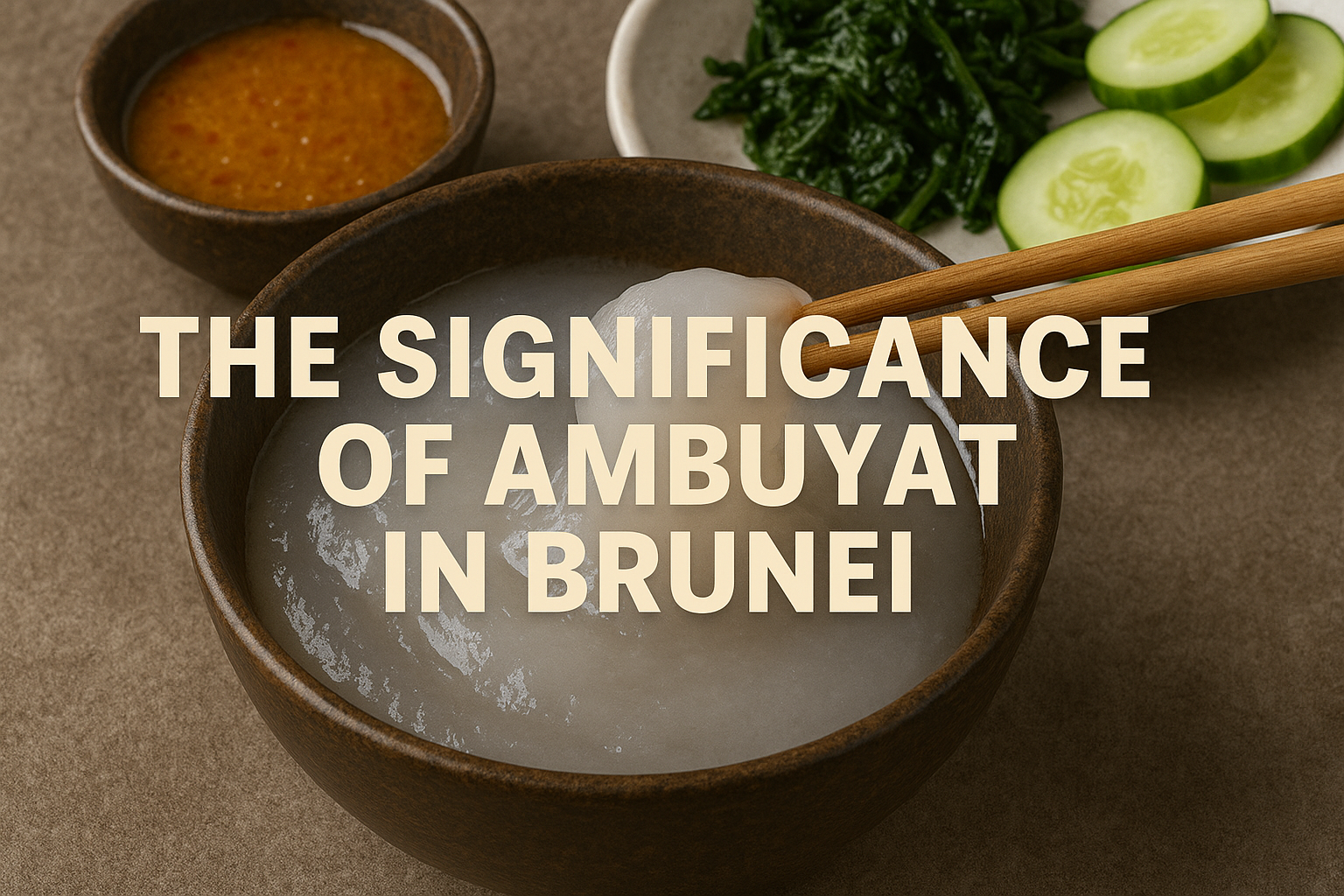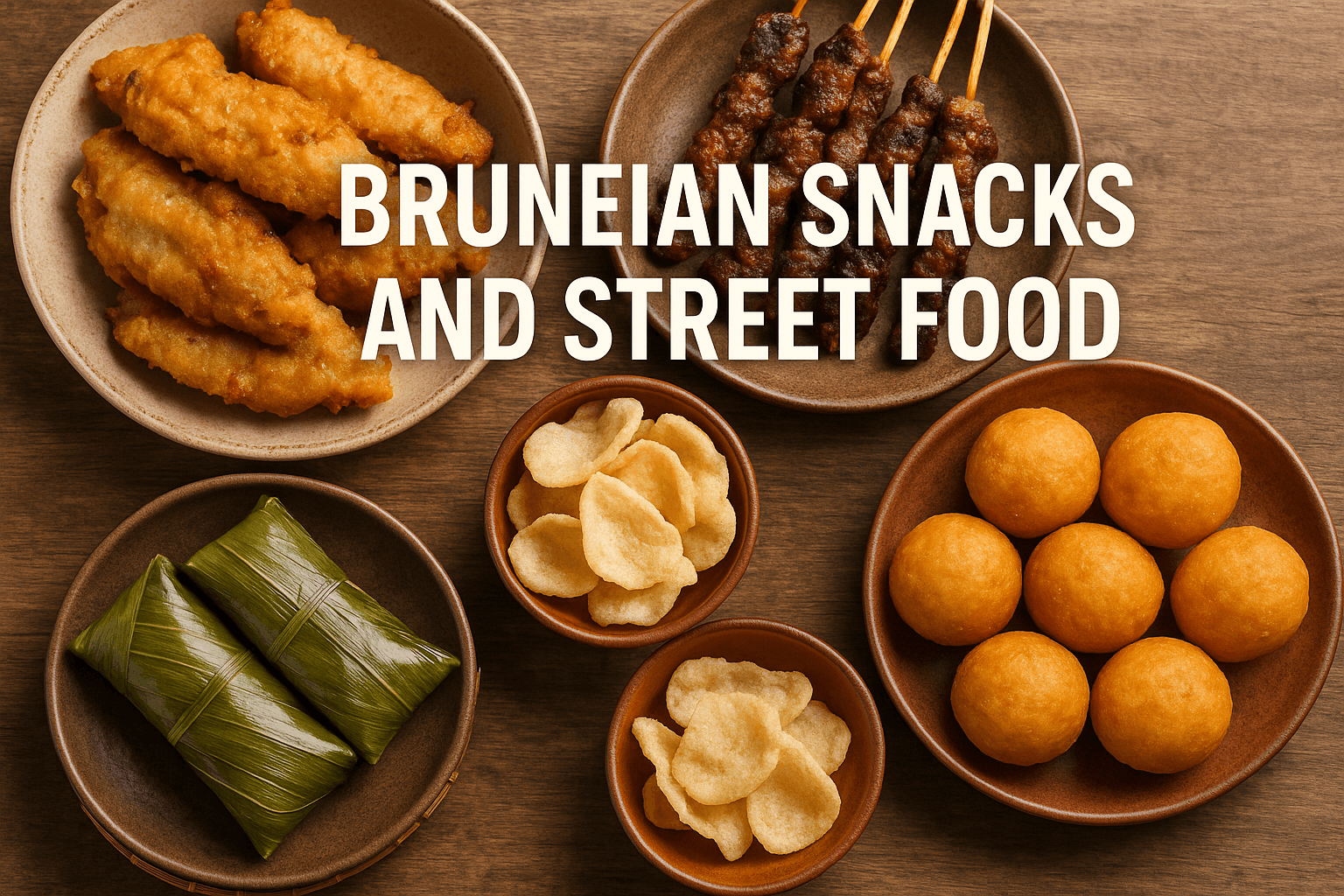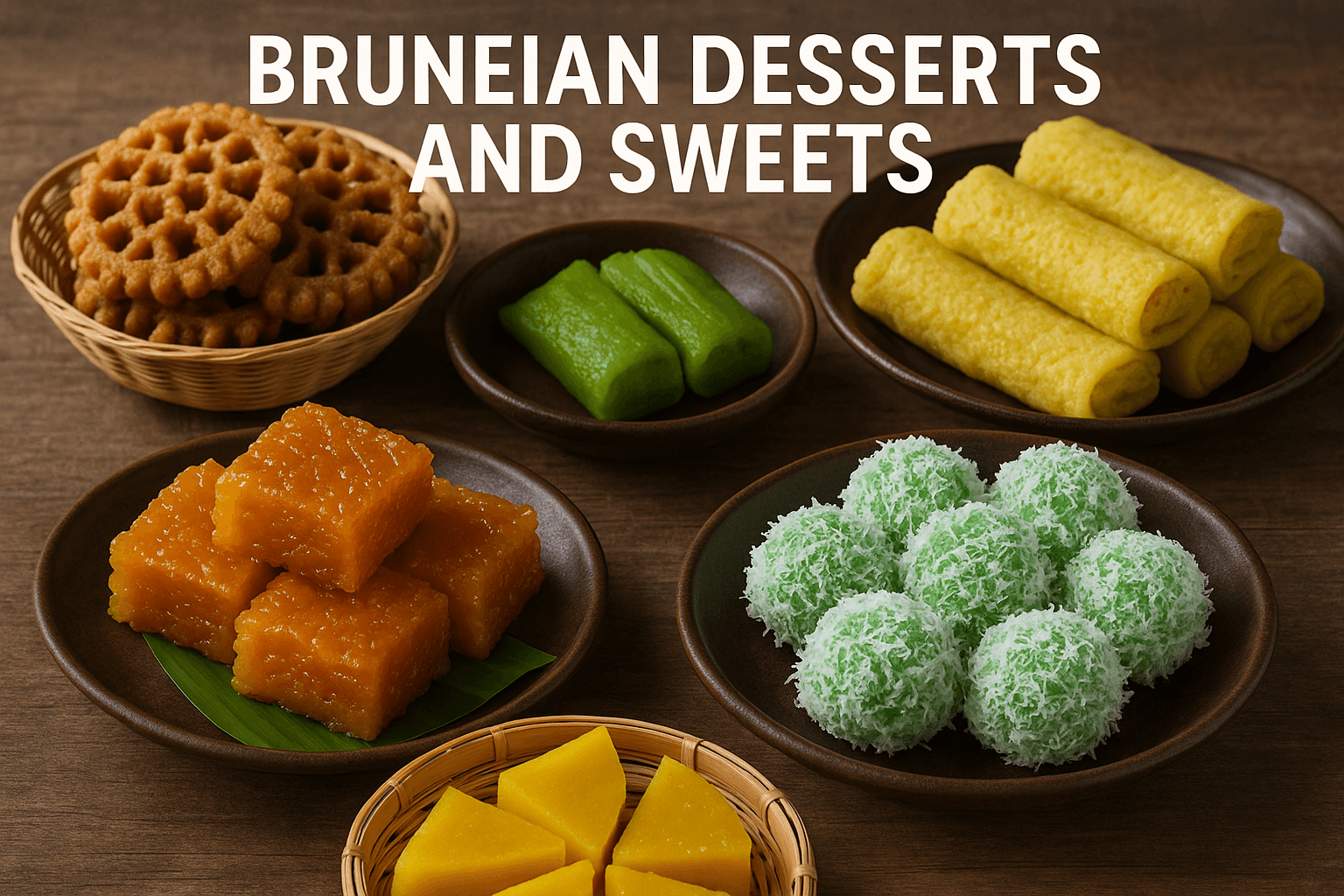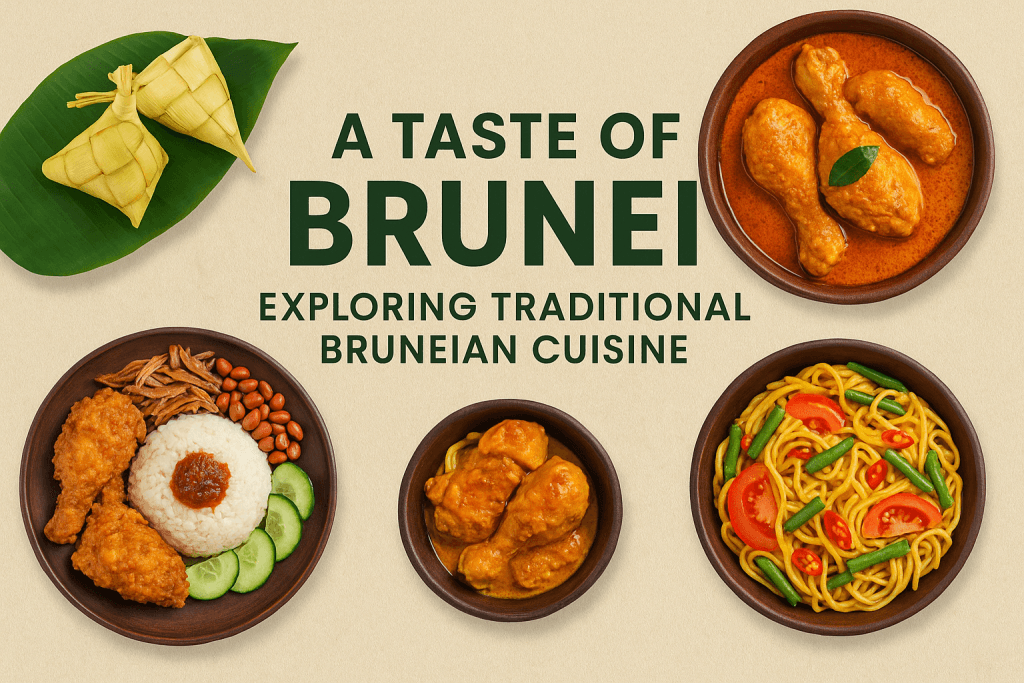A Taste of Brunei: Exploring Traditional Bruneian Cuisine begins by examining the rich culinary identity rooted in the Malay Archipelago. Brunei’s cuisine reflects a mix of indigenous flavors, Malay influences, and touches from neighboring countries like Malaysia and Indonesia.
Traditional Bruneian dishes showcase fragrant spices, rice as a staple, and coconut milk as a foundational element. The Bruneian food scene captures authenticity in regional recipes and vibrant local meals.
Bruneian culinary traditions have long celebrated the blend of fresh herbs, savory meats, and seafood-rich recipes. Dishes like Nasi Katok and Ambuyat offer insight into daily food preferences and social eating habits. The emphasis on rice dishes, traditional cooking methods, and handmade sauces reflects Brunei’s respect for cultural preservation in gastronomy.
The Role of Rice and Staples in Bruneian Cuisine
A Taste of Brunei: Exploring Traditional Bruneian Cuisine cannot ignore the central role of rice in the national diet. Nasi Putih, or plain steamed rice, accompanies nearly every meal. Sticky rice variations also contribute to festive dishes. Rice in Brunei signifies more than nutrition; it represents cultural unity and familial heritage.

Bruneian rice dishes often include sambal and protein elements, creating balanced meals served during both casual lunches and ceremonial gatherings. Rice-based meals such as Nasi Lemak and Nasi Katok continue to hold cultural value. Rice recipes in Brunei also often feature fried anchovies, eggs, and sambal belacan, creating a symphony of flavor and tradition.
Iconic Traditional Bruneian Dishes
To fully appreciate A Taste of Brunei: Exploring Traditional Bruneian Cuisine, one must analyze iconic dishes passed down across generations. Nasi Katok, the simple yet beloved rice dish served with fried chicken and sambal, exemplifies Brunei’s minimalist yet flavorful approach. This dish symbolizes Brunei’s culinary ingenuity and affordability in food preparation.
![]()
Another signature dish is Ambuyat, made from sago starch and eaten with various dipping sauces. Ambuyat represents a uniquely Bruneian dining experience. Its neutral base allows flavor from side dishes and condiments to shine. The preparation of Ambuyat with bamboo chopsticks, called candas, adds cultural depth and traditional technique to the experience.
See more: https://tripwordwide.com/what-is-brunei-cuisine/
The Significance of Ambuyat in Brunei
Ambuyat, a crucial element in A Taste of Brunei: Exploring Traditional Bruneian Cuisine, reflects indigenous practices and sago utilization in coastal and riverine communities. Ambuyat’s elasticity and starchy texture distinguish it from rice-based dishes. It embodies a communal dining ritual that Bruneians practice during family meals and celebrations.

Dipping sauces accompanying Ambuyat include tempoyak (fermented durian), binjai sauce, and chili-based condiments. Each sauce introduces a different profile—sour, spicy, tangy—highlighting the variety in Bruneian palate preferences. Ambuyat serves as a cultural bridge linking past and present traditions in Brunei’s food system.
Bruneian Snacks and Street Food
In understanding A Taste of Brunei: Exploring Traditional Bruneian Cuisine, one must appreciate street food and local snacks. Street vendors in Brunei offer delights like Kuih Cincin, a sweet crunchy ring-shaped snack made from rice flour and palm sugar. These snacks often reflect traditional preparation methods and are sold in morning markets across the country.

Another Bruneian snack, Pulut Panggang, is glutinous rice grilled in banana leaves, filled with spicy shrimp floss or beef floss. This popular snack combines savory flavors with natural leaf wrapping. Bruneian food culture integrates snack offerings with daily routines, enhancing culinary accessibility in both urban and rural regions.
Bruneian Desserts and Sweets
A Taste of Brunei: Exploring Traditional Bruneian Cuisine also includes traditional desserts that satisfy sweet cravings. Kuih Melaya, Wajid, and Tapai are among the staples of Bruneian sweets. Made from glutinous rice, palm sugar, coconut milk, and fermented rice, these delicacies reveal Brunei’s expertise in using native ingredients.

Tapai, a fermented rice dessert, is often wrapped in banana leaves and served cold. It reflects Brunei’s cultural knowledge of preservation and fermentation. Wajid, made with sticky rice and wrapped in nyirik leaves, provides both nutrition and indulgence. Bruneian sweets serve as symbolic elements during festivals, family gatherings, and religious events.
Cultural Influences on Bruneian Food
A Taste of Brunei: Exploring Traditional Bruneian Cuisine illustrates how Brunei’s culinary scene is enriched by cultural diversity. Islamic dietary laws influence food preparation and ingredient choices, ensuring halal compliance. Chinese, Indian, and Arab traders have also introduced ingredients like spices, noodles, and aromatic herbs into Brunei’s food repertoire.
The cultural fusion extends to dishes such as Mee Goreng, Roti Canai, and Chicken Curry, which have been adapted to suit Bruneian preferences. Brunei’s cultural and religious values shape eating practices, cooking techniques, and community feasting habits. Food in Brunei serves both as nourishment and a tool for cultural education.
Seafood and Coastal Flavors
Given Brunei’s coastal geography, A Taste of Brunei: Exploring Traditional Bruneian Cuisine involves a deep appreciation for seafood. Dishes made with prawns, squid, and various types of fish dominate coastal menus. Grilled fish marinated with turmeric and lemongrass exemplifies the use of local herbs and spices.
Ikan Bakar, or grilled fish, is frequently served with rice and sambal. Shrimp cooked in coconut milk, locally known as Udang Lemak, brings richness and depth to Brunei’s seafood offerings. Coastal cuisine emphasizes freshness, sustainability, and tradition, making seafood a vital pillar in the Bruneian diet.
Traditional Bruneian Cooking Methods
A Taste of Brunei: Exploring Traditional Bruneian Cuisine necessitates a look into native cooking techniques. Bruneian households often use slow-cooking methods such as simmering, steaming, and grilling. Clay pots and bamboo cooking add earthy flavors and aroma to traditional dishes.
Preparation techniques like fermenting, pickling, and pounding spices from scratch preserve authenticity. Bruneian cooks use mortar and pestle to prepare sambal and spice pastes. Techniques passed down through generations ensure that recipes remain faithful to tradition, reinforcing Brunei’s commitment to culinary preservation.
The Role of Sambal in Bruneian Cuisine
In A Taste of Brunei: Exploring Traditional Bruneian Cuisine, sambal plays a central role as a condiment. Made from chili, garlic, shallots, and shrimp paste, sambal complements nearly every dish. Spicy and aromatic, sambal balances sweet, salty, and tangy flavors. Each household prepares sambal differently, reflecting regional variations.
Variants such as Sambal Belacan and Sambal Tempoyak highlight creativity in Brunei’s culinary culture. Sambal is served with rice, fish, vegetables, and noodles. It embodies Brunei’s love for bold flavor combinations and artisanal food preparation. Without sambal, Bruneian meals would feel incomplete.
Brunei’s Festive Foods and Ceremonial Dishes
Festive foods are critical to A Taste of Brunei: Exploring Traditional Bruneian Cuisine. Celebrations such as Hari Raya and weddings feature elaborate dishes like Rendang, Satay, and Ketupat. Rendang, made from beef slow-cooked in coconut milk and spices, signifies opulence and honor in communal feasts.
Ketupat, rice packed in palm leaves and boiled, symbolizes unity and celebration. These festive dishes express Brunei’s value for community, tradition, and shared joy. Bruneian cuisine plays a pivotal role in religious observances, life milestones, and social ceremonies.
Halal Practices and Food Ethics
Brunei adheres strictly to halal food standards. A Taste of Brunei: Exploring Traditional Bruneian Cuisine remains incomplete without discussing halal certification, which governs sourcing, slaughtering, and processing. Every food establishment in Brunei follows guidelines aligned with Islamic principles.
Halal compliance enhances food safety and consumer trust. Local authorities regularly inspect food vendors to ensure standards are met. This adherence reinforces Brunei’s reputation for culinary integrity and ethical consumption. Bruneian cuisine is not only flavorful but also ethically conscious and religiously respectful.
Regional Variations within Brunei
Despite its small size, Brunei contains regional food variations. A Taste of Brunei: Exploring Traditional Bruneian Cuisine acknowledges how Temburong, Belait, Tutong, and Brunei-Muara each offer distinct culinary signatures. Temburong is known for forest-sourced ingredients, while coastal areas specialize in seafood.
Inland areas emphasize freshwater fish, root vegetables, and herbs gathered from jungle terrain. Regional diversity promotes culinary tourism and local pride. Food choices reflect ecological resources and cultural identity. Bruneian regional food varieties display innovation grounded in geography.
Beverages and Traditional Drinks
Beverages in Brunei also feature prominently in A Taste of Brunei: Exploring Traditional Bruneian Cuisine. Teh Tarik, a frothy milk tea, is popular in social settings. Sirap Bandung, a rose syrup drink mixed with condensed milk, serves as a refreshing option during celebrations.
Traditional herbal drinks, such as Tongkat Ali tea and Pandan-infused water, highlight Brunei’s use of medicinal plants. These beverages not only quench thirst but also contribute to cultural wellness practices. Drinks accompany meals and offer a full sensory food experience unique to Brunei.
Modern Influences and Culinary Evolution
Modernization has also shaped Bruneian cuisine. Fast food and international chains influence young Bruneians’ eating habits. Still, A Taste of Brunei: Exploring Traditional Bruneian Cuisine remains strong through culinary education and food festivals. Chefs now experiment by blending traditional and modern techniques.
Fusion dishes like Nasi Katok burgers or sambal pasta are becoming trendy while retaining Bruneian essence. Culinary schools and food programs teach youth the value of heritage cooking. Brunei’s culinary identity continues to evolve while respecting its roots.
Agricultural and Ingredient Sourcing
Traditional Bruneian cuisine depends heavily on local sourcing. Freshness and seasonality define ingredient selection. A Taste of Brunei: Exploring Traditional Bruneian Cuisine emphasizes ingredients such as pandan, lemongrass, galangal, turmeric, and coconut milk. Local agriculture supports both home cooks and small-scale businesses.
Brunei’s climate supports year-round growth of herbs and vegetables. Community gardens, markets, and rural farms keep the food supply sustainable. Ingredient sourcing reflects both environmental stewardship and culinary consistency. Bruneians prefer farm-to-table freshness as a cultural norm.
Culinary Tourism and International Recognition
Brunei seeks to promote culinary tourism by highlighting its rich food culture. A Taste of Brunei: Exploring Traditional Bruneian Cuisine is attracting travelers interested in authentic gastronomy. Food trails, cooking classes, and traditional markets form part of Brunei’s tourism initiatives.
Tourists explore night markets like Pasar Gadong and experience live cooking demonstrations. Brunei’s efforts to document traditional recipes and promote local ingredients increase its visibility in Southeast Asia’s food map. Culinary tourism builds cultural bridges through taste and tradition.
Bruneian Food and Health
Health consciousness is increasingly influencing food preparation. A Taste of Brunei: Exploring Traditional Bruneian Cuisine incorporates nutritional awareness. Traditional ingredients such as turmeric, ginger, and leafy greens contribute to balanced diets. Reduced oil usage and steaming techniques enhance health benefits.
Local dishes maintain low sugar and sodium levels, especially when prepared at home. Bruneians are now integrating wellness into traditional cooking. Public health campaigns support the use of organic ingredients and fresh produce. Brunei’s traditional cuisine balances flavor with health-conscious practices.
Preservation of Traditional Recipes
Preserving culinary heritage is vital to national identity. A Taste of Brunei: Exploring Traditional Bruneian Cuisine underscores how elders pass down recipes orally and through practice. Efforts are underway to digitally document Bruneian food practices to safeguard against cultural loss.
Nonprofit organizations, cultural ministries, and educational institutions host recipe archiving projects. Cookbooks, documentaries, and community events play a role in safeguarding Bruneian food knowledge. Preservation ensures that future generations can enjoy and respect traditional dishes.
Conclusion
A Taste of Brunei: Exploring Traditional Bruneian Cuisine presents an intricate mosaic of flavors, cultural wisdom, and heritage practices. Traditional Bruneian dishes symbolize more than nourishment; they represent identity, ethics, and historical continuity. From Ambuyat to Kuih Cincin, each dish contributes to the narrative of a resilient culinary culture.
Brunei’s food traditions showcase the country’s dedication to cultural preservation, halal integrity, and communal values. This cuisine deserves global attention for its uniqueness and authenticity. Exploring Bruneian food offers a deeper understanding of the nation’s spirit through the art of traditional cooking.

